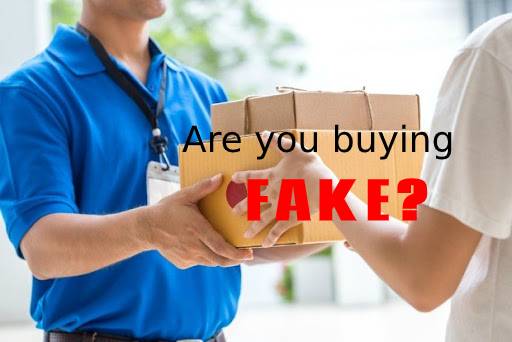E-commerce industry scrambles to curb counterfeits but there is no end in sight
Counterfeit goods put innovative companies out of business thus reducing the quality of products and hampering future innovation.

The e-commerce industry is consistently delivering on the promise to bring the world at your doorstep, quite literally, and is touching new highs every day supported by the rise in internet penetration. The industry has also made it possible for anyone to sell goods and services anywhere in the world.
As amazing as it sounds, it can be disastrous for companies, consumers and even governments if not regulated properly.
The ability to send one’s goods around the world by just clicking a few buttons has made the counterfeit industry a lot more lucrative and so the products are flooding markets at a faster pace than ever before.
The counterfeit problem on e-commerce platforms
Amazon recently said that it has taken down 1 million product listings that inaccurately claimed to cure or defend against the coronavirus. Within just a little over one month of the virus being identified, over 1 million fake products popped up on Amazon alone to bank on public fear and that just explains the depth of the problem.
Earlier Amazon had said that, in 2019, it blocked more than 6 billion “suspected bad” listings and stopped over 2.5 million suspected bad actors from opening seller accounts.
But the problem is not just limited to Amazon; eBay, Walmart and many other smaller online retailers that allow third-party sellers are in the crosshairs of the problem that just keeps on growing.
A Frontier Economics report titled ‘The Economic Impacts of Counterfeiting and Piracy’ projects that the total value of counterfeit and pirated goods could reach USD 1.90-2.81 trillion by 2022 with 4.2-5.4 million people losing their jobs during the same period of time.
The problem of counterfeit goods has been acknowledged by governments all over the world and the United States is on the frontline in battle against counterfeit goods.
Many counterfeit or fake products originate from China and President Donald Trump has demanded that Beijing take tangible steps in countering the problem ever since trade tensions between the 2 countries started.
In January this year, the US and China signed a trade agreement that included a provision to stanch the sale of counterfeit goods on e-commerce platforms like Amazon. US and China have agreed that both parties will work to “combat the prevalence of counterfeit or pirated goods” by taking “effective action” when the online platforms have failed to prevent intellectual property infringement.
How does it affect companies and consumers?
Companies spend a lot of resources to come up with new innovative products that make consumers’ lives easier and they expect to recover the costs and make some profits when those products are sold. But when counterfeiters make fake products, they avoid the costs that go into R&D, design, advertising, and other such things. This makes their product cheaper and sometimes, more attractive which helps them eat into the market share of original products even though counterfeits violate intellectual property laws.
Counterfeiting puts innovative companies out of business thus reducing the quality of products and future innovation.
It also hurts local economies as counterfeiting companies are often clustered into very few countries but operate across the world with the help of e-commerce websites. This means the revenue from counterfeit goods goes back to the origin country, hurting companies, governments, and consumers in the way.
Why stopping counterfeits is so hard?
Buying fake reviews in bulk today is even easier than selling fake products, this helps counterfeiters to manipulate the opinion of consumers and tricking them into buying their products.
On Wednesday, March 4, the US lawmakers during a House of Representatives hearing grilled representatives from Amazon, eBay and Walmart over the same issue.
On fake reviews, Amazon’s representative Dharmesh Mehta, vice president of worldwide customer trust and partner support, said that the company also blocked or suppressed over 100 million suspected fake reviews in 2019 and also argued that more needs to be done by social media platforms where such reviews are bought and sold.
Initiatives by e-commerce companies like Amazon’s Project Zero, which lets brands take down counterfeits products, are helping to reduce the problem but more needs to be done on their part.
Counterfeiters are making it harder for fake products to be detected by machines and weeding them out manually from hundreds of thousands of packages is an exhausting and costly process.
Countries are already weeding out packages manually but, evidently, it is not working. One practical solution would be to tackle the problem at the source and not as it spreads, which is what Trump is advocating in the case of China.
Countries with counterfeiting hotspots should do more to ensure that intellectual property rights are respected and innovation is supported.
(Disclaimer: The opinions expressed are the personal views of the author. The facts and opinions appearing in the article do not reflect the views of Devdiscourse and Devdiscourse does not claim any responsibility for the same.)
- READ MORE ON:
- E-Commerce
- Amazon
- Flipkart
- Walmart
- E-Bay
- E-Commerce Problems
- FIRST PUBLISHED IN:
- Devdiscourse
ALSO READ
Antitrust Showdown: India's Supreme Court to Address Amazon and Flipkart Challenges
Indian Startups Redefine E-Commerce with Instant Delivery Innovations
E-commerce Startups Thrive in Hybrid Staffing Era
Flipkart Teams Up with DPIIT to Propel Indian Tech Startups
Amazon's $80 Billion Export Vision: Propelling India's Manufacturing Glory










